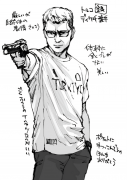Sweet Jesus...
Based on bony landmarks, that bullet likely missed her common femoral artery as it almost always divides higher than where her injury is. It is impossible to say by the X-ray, but based on your post, it hit one branch of common femoral, not both (?). If that were the case, it could have helped with the amount of extravasation. In addition, if SFA was a branch affected, it is relatively easier to compress externally than profunda. The head of a femoral bone, that part that goes into a socket, is the level where one wants to compress manually, and that theoretically can stop bleeding completely. Nevertheless, this X ray is terrifying.




 Reply With Quote
Reply With Quote

